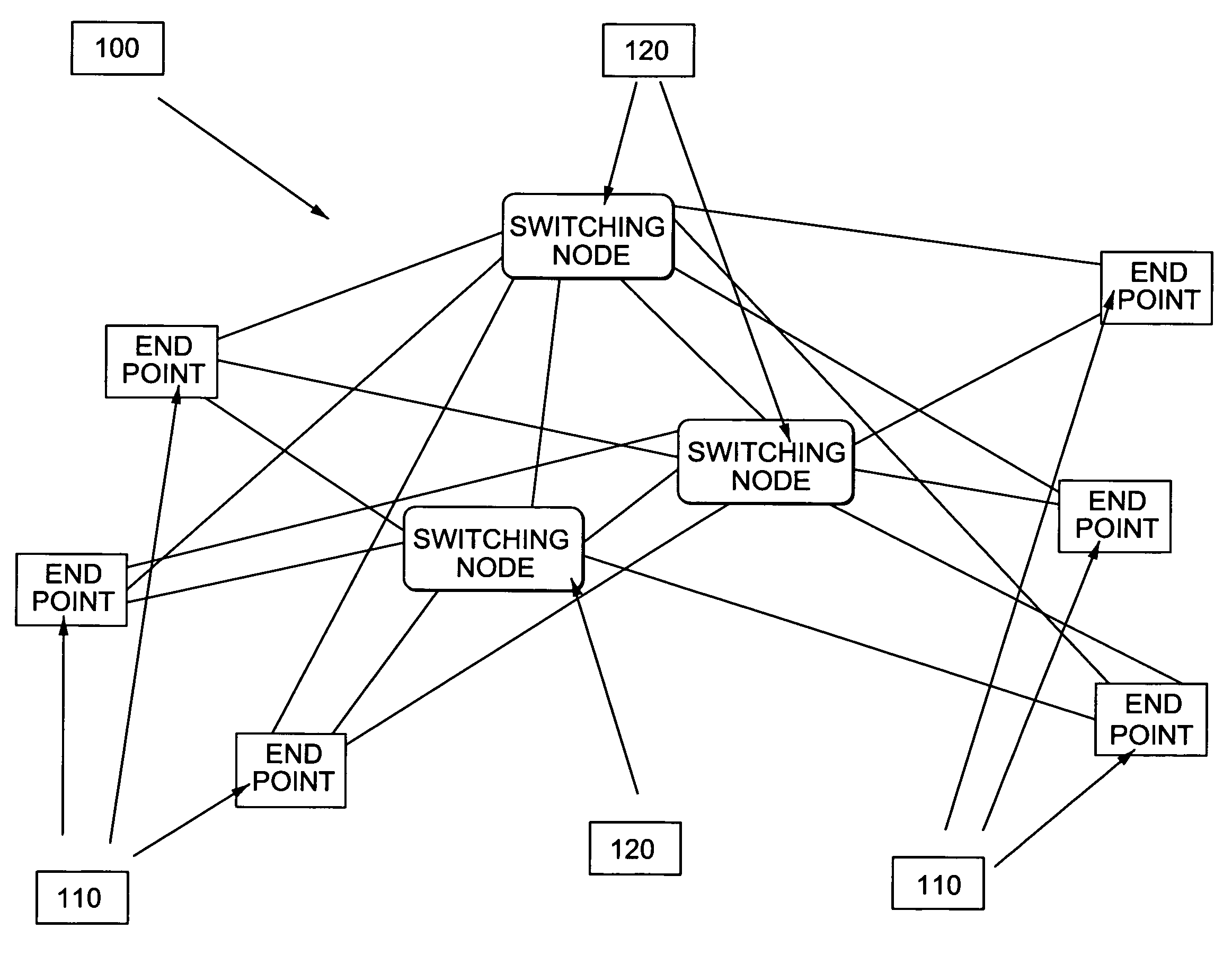Packet routing
a packet and packet technology, applied in the field of packet routing, can solve the problems of under-utilization of network resources using shortest path first, scatter routing performance in simulations, and performance only slightly less well, so as to reduce the memory needs of routers and reduce complexity. the effect of overhead
- Summary
- Abstract
- Description
- Claims
- Application Information
AI Technical Summary
Benefits of technology
Problems solved by technology
Method used
Image
Examples
Embodiment Construction
[0019]FIG. 1 shows an example of the sort of network that can be used with the method of the present invention. Network 100 comprise a plurality of switching nodes 120 and a plurality of endpoint nodes 110. In the network shown in FIG. 1 there are six endpoint nodes 110 and three switching nodes 120, all of which are fully inter-connected (i.e. there is a direct connection for each node to all of the other nodes, whether an endpoint node 110 or a switching node 120, in the network. As networks grow it becomes infeasible to have a fully interconnected network and each a maximum number of connections, m, is defined for each network node. The value of m may be constant for all of the nodes within the network or constrained within a range of values.
[0020]In order to demonstrate the advantages of the present invention a number of different networks were generated in order to perform a number of simulations. The rules used to construct the simulated network were in general as follows. Fir...
PUM
 Login to View More
Login to View More Abstract
Description
Claims
Application Information
 Login to View More
Login to View More - R&D
- Intellectual Property
- Life Sciences
- Materials
- Tech Scout
- Unparalleled Data Quality
- Higher Quality Content
- 60% Fewer Hallucinations
Browse by: Latest US Patents, China's latest patents, Technical Efficacy Thesaurus, Application Domain, Technology Topic, Popular Technical Reports.
© 2025 PatSnap. All rights reserved.Legal|Privacy policy|Modern Slavery Act Transparency Statement|Sitemap|About US| Contact US: help@patsnap.com



